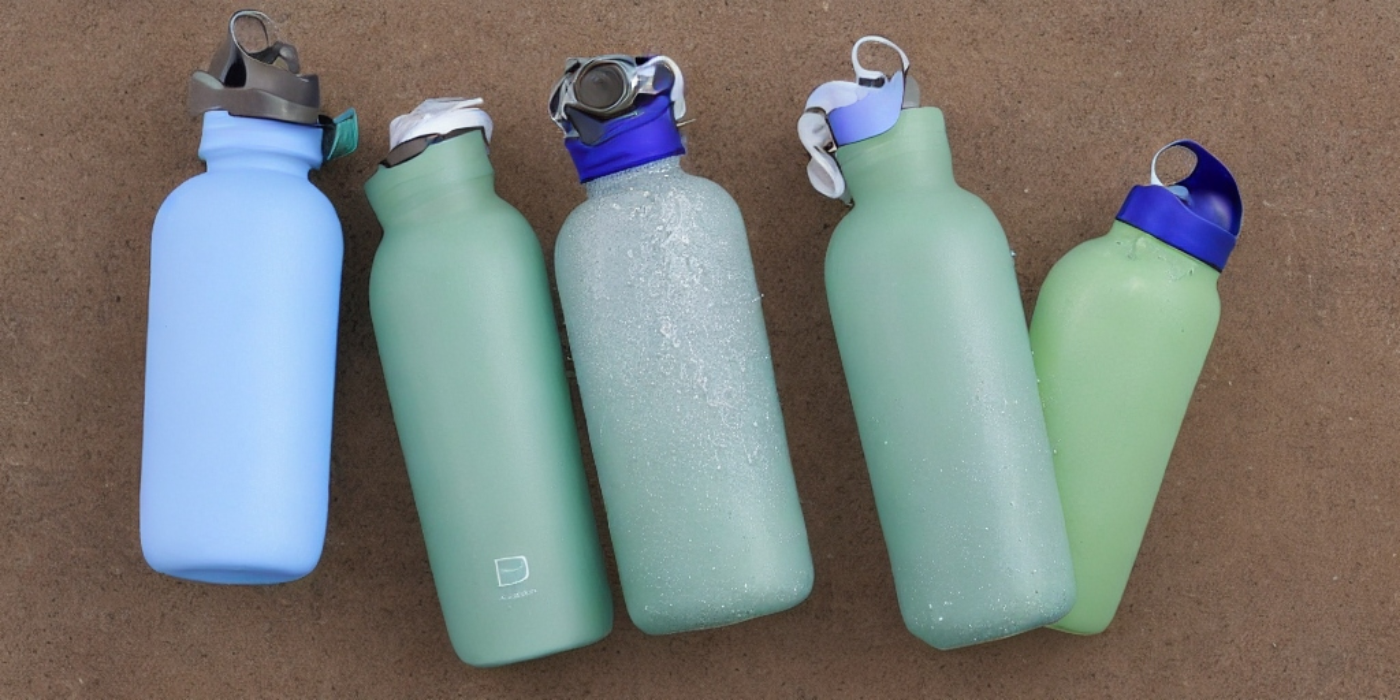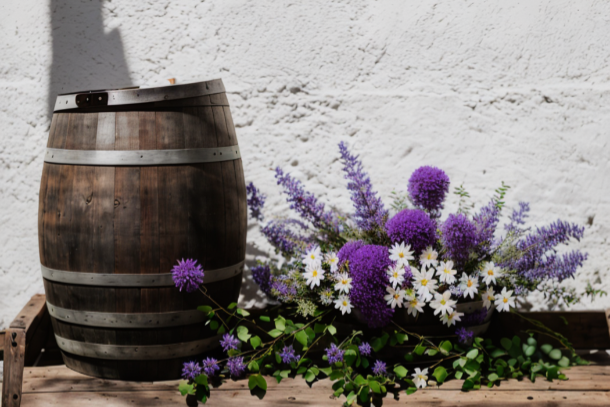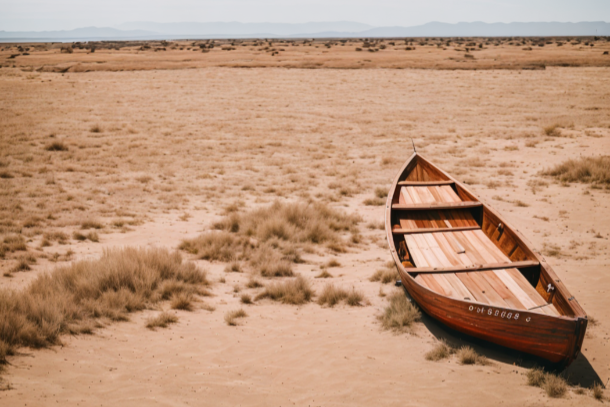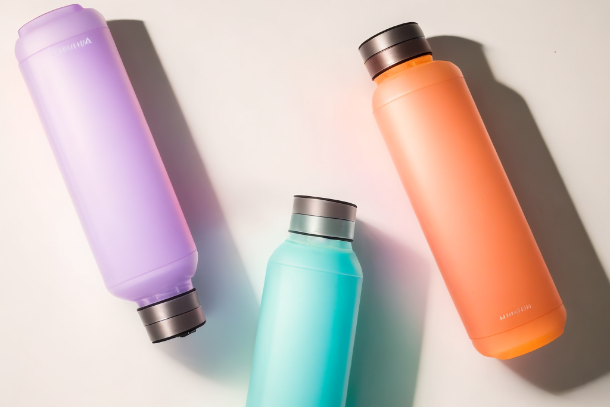Water Bottles: The Environmental Impact. How many 16.9 ounce water bottles are in a gallon?

Water Bottles: The Environmental Impact
Water is essential for life, and most people drink it from a bottle at some point during the day. However, the type of bottle you choose can have a big impact on the environment.
Plastic Bottles
Plastic bottles are the most common type of water bottle, but they are also the most harmful to the environment. Plastic bottles are made from petroleum, a non-renewable resource. They also take hundreds of years to decompose, which means they end up in landfills and oceans, where they can pollute the environment and harm wildlife.
There are three main types of plastic used in water bottles:
- PET (polyethylene terephthalate): PET is the most common type of plastic used in water bottles. It is lightweight, durable, and recyclable. PET bottles are typically clear or blue.
- HDPE (high-density polyethylene): HDPE is a durable plastic often used in milk jugs and other food containers. HDPE bottles are typically opaque white or black.
- PP (polypropylene): PP is a lightweight and heat-resistant plastic that is often used in food containers and reusable water bottles. PP bottles are typically clear or white.
It is important to note that not all plastic water bottles are created equal. Some plastic water bottles may contain harmful chemicals, such as BPA. BPA is a chemical that has been linked to health problems, such as reproductive problems and cancer.
If you are concerned about the safety of your water bottle, it is important to choose a BPA-free bottle. You can find BPA-free water bottles at most major retailers.
It is also important to recycle your plastic water bottles when you are finished with them. Recycling helps to reduce the amount of plastic waste that ends up in landfills and oceans.
Glass Water Bottles
The environmental impact of glass water bottles is a complex issue with a variety of factors to consider. Some of the key environmental impacts of glass water bottles include:
- Energy use: The production of glass water bottles requires a significant amount of energy, which contributes to greenhouse gas emissions.
- Water use: The production of glass water bottles also requires a significant amount of water, which can be a strain on local water resources.
- Waste: Glass water bottles are not biodegradable, so they can end up in landfills or incinerators, where they can release harmful pollutants into the environment.
- Recycling: Glass water bottles can be recycled, but the recycling process requires energy and water.
Overall, the environmental impact of glass water bottles is significant. However, it is essential to note that the ecological impact of any type of water bottle will vary depending on a variety of factors, such as the type of material used, the manufacturing process, and how the bottle is disposed of.
Here are some tips for reducing the environmental impact of glass water bottles:
- Choose a reusable glass water bottle: Reusable water bottles can help to reduce the amount of single-use plastic waste.
- Fill your reusable water bottle from the tap: Tap water is generally safe to drink and can help to reduce the amount of water used to produce bottled water.
- Recycle your glass water bottles: Recycling helps to reduce the amount of glass waste that ends up in landfills.
By following these tips, you can help to reduce the environmental impact of glass water bottles.
Metal Water Bottles, which to use?
There are two main types of metal water bottles: stainless steel and aluminium.
- Stainless steel water bottles: Stainless steel is a durable and corrosion-resistant material that is safe for food and drink. Stainless steel water bottles are typically more expensive than aluminium water bottles, but they are also more durable and can last for many years.
- Aluminium water bottles: Aluminum is a lightweight and inexpensive material that is also safe for food and drink. Aluminium water bottles are typically less expensive than stainless steel water bottles, but they are also less durable and may not last as long.
Here are some of the advantages and disadvantages of each type of metal water bottle:
Stainless steel water bottles
Advantages
- Durable
- Corrosion-resistant
- Safe for food and drink
- BPA-free
- Recyclable
Disadvantages
- More expensive than aluminium water bottles
- Can be heavier than aluminium water bottles
- May not be as stylish as aluminium water bottles
Aluminium water bottles
Advantages
- Lightweight
- Inexpensive
- Safe for food and drink
- BPA-free
- Recyclable
Disadvantages
- Less durable than stainless steel water bottles
- May be more prone to corrosion
- Not as stylish as stainless steel water bottles
Reusable Water Bottles
Reusable water bottles are a much better option for the environment. They are made from materials that can be recycled or reused, and they do not contribute to plastic pollution. Reusable water bottles also save money in the long run, as you will no longer have to buy bottled water.
Which Reusable Water Bottle is Right for You?
There are many different types of reusable water bottles available, so it is important to choose one that is right for you. Here are a few factors to consider when choosing a reusable water bottle:
| Material | Advantages | Disadvantages |
|---|---|---|
| Plastic | Lightweight, affordable, and available in a variety of colours and styles. | Can leach chemicals into the water, is not recyclable in some areas, and can contribute to plastic pollution. |
| Stainless steel | Durable, long-lasting, and does not leach chemicals into water. | Can be heavier and more expensive than plastic water bottles. |
| Glass | BPA-free, recyclable, and does not leach chemicals into water. | Can be heavier and more fragile than plastic or stainless steel water bottles. |
| Aluminum | Lightweight, durable, and recyclable. | Can react with acidic drinks, and may contain BPA. |
| Silicone | Lightweight, durable, and does not leach chemicals into water. | Can be more difficult to clean than other materials, and may retain smells. |
Ultimately, the best material for you will depend on your individual needs and preferences. If you are looking for a lightweight and affordable water bottle, plastic may be a good option. If you are looking for a durable and long-lasting water bottle, stainless steel or glass may be a better choice. If you are concerned about the environment, you may want to choose a water bottle made from a recyclable material such as aluminium or silicone.
- Material: Reusable water bottles are made from a variety of materials, including plastic, stainless steel, and glass. Each material has its own advantages and disadvantages. Plastic bottles are the most lightweight and affordable, but they can leach chemicals into your water. Stainless steel bottles are durable and can keep your water cold for hours, but they are heavier and more expensive. Glass bottles are the most environmentally friendly, but they are also the heaviest and most fragile.
- Size: Reusable water bottles come in a variety of sizes. Choose a size that is comfortable for you to carry and that will hold enough water for your needs.
- Features: Some reusable water bottles have features such as
- insulation
- filters
- time markings
- Lid types - screw-on lids, flip-top lids, and straw lids
Consider which features are important to you before making a purchase.
How to Recycle Water Bottles
Recycling water bottles is an easy way to reduce your environmental impact. Most plastic water bottles can be recycled in your curbside recycling bin. If you are unsure if your water bottle can be recycled, check with your local recycling centre.
How many 16.9 ounce water bottles are in a gallon?
The number of water bottles that make up a gallon depends on the size of the water bottle. A standard 16.9-ounce water bottle contains 0.546 gallons of water. Therefore, it would take 8 standard 16.9-ounce water bottles to make a gallon.
However, there are many different sizes of water bottles available. For example, a small 8-ounce water bottle contains 0.238 gallons of water, while a large 20-ounce water bottle contains 0.667 gallons of water. Therefore, it would take 16 8-ounce water bottles or 4.5 large 20-ounce water bottles to make a gallon.
It is important to note that the number of water bottles that make up a gallon is only an estimate. The actual amount of water in a water bottle may vary depending on the brand and the manufacturing process.
A round-up of what's best in water bottles
The type of water bottle you choose can have a big impact on the environment. Reusable water bottles are a much better option for the environment than plastic bottles. When choosing a reusable water bottle, consider the material, size, and features that are important to you. And be sure to recycle your water bottles when you are finished with them.
Related to this article are the following:
I do hope you have enjoyed this article and hope that you will subscribe to my newsletter so you can get the latest information about all things naturally relaxing.
Stay in touch, join the Naturally Relaxing Newsletter
Newsletter Signup
Post Your Comments
or post as a guest
Be the first to comment.
Latest articles in Water
Idea is to do article on waterfall

Finding the Perfect Swimming Hole: Your Comprehensive Guide

Exploring Sea Deities Around the World: A Dive into Global Mythologies

Harvesting Rainwater: A Comprehensive Guide to Rain Barrels and Water Storage

Creating Resilient Gardens: An Expert Guide to Drought-Tolerant Landscaping






